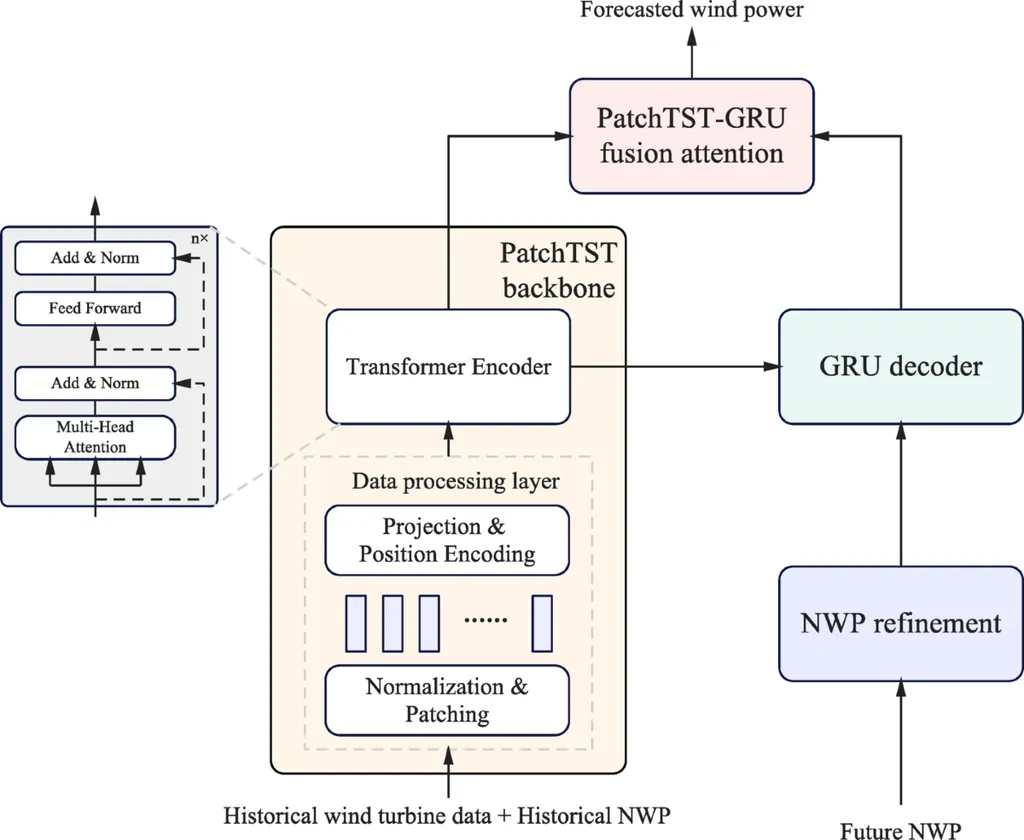In the quest to harness the full potential of wind energy, accurate forecasting stands as a critical pillar. A recent study published in the journal *Nature Scientific Reports* introduces a novel approach that could significantly enhance wind power predictions, offering substantial benefits to the energy sector. Led by Shiwei Xu from the School of Artificial Intelligence at Wenzhou Polytechnic, the research presents a sophisticated model that addresses long-standing challenges in multi-step wind power forecasting.
The study tackles key issues such as error accumulation, underutilization of numerical weather prediction (NWP) data, and the need to capture localized meteorological characteristics. The proposed solution is a heterogeneous sequence-to-sequence (seq2seq) model, which combines a PatchTST backbone as the encoder with a GRU decoder. This architecture is designed to extract local temporal features from historical wind power data and generate prediction sequences, thereby improving long-term dependency modeling.
One of the standout features of this model is the NWP refinement module. This module enhances the usability of low-resolution NWP data through spatiotemporal scaling, providing future meteorological trend guidance for the decoder. “The NWP refinement module is crucial because it allows us to make better use of the available weather data, which in turn improves the accuracy of our predictions,” Xu explains.
The model also introduces a fusion attention mechanism with asymmetric query-key-value matrices. This mechanism dynamically fuses historical wind power temporal patterns with refined NWP features, optimizing the prediction outcomes. “By integrating these different data sources, we can create a more comprehensive and accurate forecast,” Xu adds.
The effectiveness of the proposed model was demonstrated through experiments using real-world wind farm data. Within 48 to 288 forecasting steps, the model outperformed conventional approaches such as light gradient boosting machine, support vector regression, and seq2seq in multiple evaluation metrics. This framework provides reliable multi-step power forecasting support for wind farm operations, which is crucial for efficient energy management and grid stability.
The implications of this research are far-reaching. Accurate wind power forecasting is essential for the integration of renewable energy into the grid, reducing reliance on fossil fuels, and ensuring a stable energy supply. “This model has the potential to revolutionize the way we predict wind power, making it more reliable and efficient,” Xu notes.
As the energy sector continues to evolve, the need for advanced forecasting tools becomes increasingly apparent. This research not only addresses current challenges but also paves the way for future developments in the field. By leveraging cutting-edge technologies and innovative approaches, the energy sector can move closer to achieving a sustainable and reliable energy future.
The study, published in *Nature Scientific Reports*, underscores the importance of interdisciplinary research in driving technological advancements. As the world grapples with the challenges of climate change and energy sustainability, such innovations offer a beacon of hope and a path forward.

